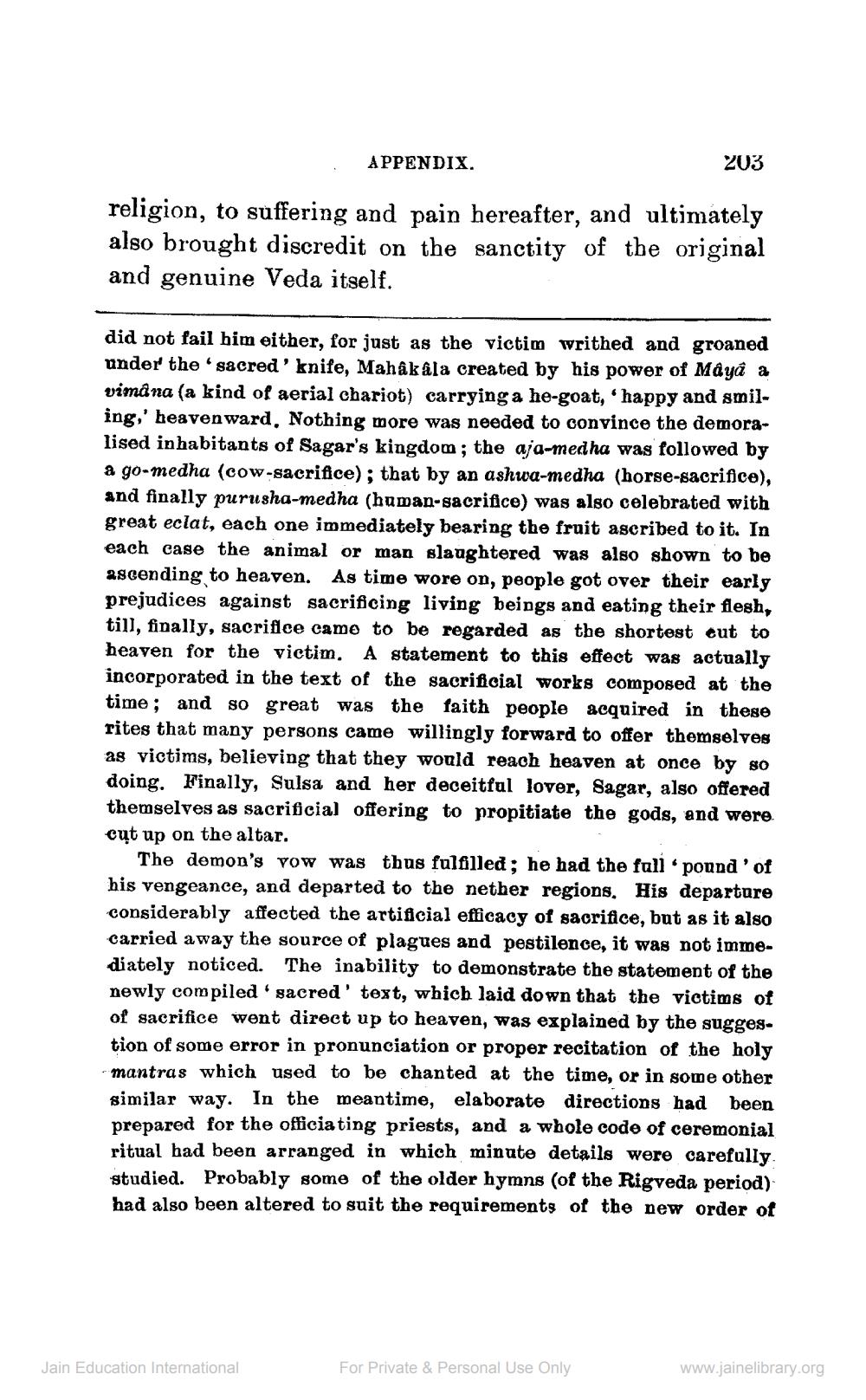________________
APPENDIX.
203
religion, to suffering and pain hereafter, and ultimately also brought discredit on the sanctity of the original and genuine Veda itself.
did not fail him either, for just as the victim writhed and groaned under the sacred' knife, Mahâkâla created by his power of Mâyâ a vimâna (a kind of aerial chariot) carrying a he-goat, 'happy and smiling,' heavenward. Nothing more was needed to convince the demoralised inhabitants of Sagar's kingdom; the aja-medha was followed by a go-medha (cow-sacrifice); that by an ashwa-medha (horse-sacrifice), and finally purusha-medha (human-sacrifice) was also celebrated with great eclat, each one immediately bearing the fruit ascribed to it. In each case the animal or man slaughtered was also shown to be ascending to heaven. As time wore on, people got over their early prejudices against sacrificing living beings and eating their flesh, till, finally, sacrifice came to be regarded as the shortest eut to heaven for the victim. A statement to this effect was actually incorporated in the text of the sacrificial works composed at the time; and so great was the faith people acquired in these rites that many persons came willingly forward to offer themselves as victims, believing that they would reach heaven at once by so doing. Finally, Sulsa and her deceitful lover, Sagar, also offered themselves as sacrificial offering to propitiate the gods, and were cat up on the altar.
The demon's Tow was thus fulfilled; he had the fall ponnd' of his vengeance, and departed to the nether regions. His departure considerably affected the artificial efficacy of sacrifice, but as it also carried away the source of plagues and pestilence, it was not immediately noticed. The inability to demonstrate the statement of the newly compiled 'sacred' text, which laid down that the victims of of sacrifice went direct up to heaven, was explained by the suggestion of some error in pronunciation or proper recitation of the holy mantras which used to be chanted at the time, or in some other similar way. In the meantime, elaborate directions had been prepared for the officiating priests, and a whole code of ceremonial ritual had been arranged in which minute details were carefully studied. Probably some of the older hymns (of the Rigveda period) had also been altered to suit the requirements of the new order of
Jain Education International
For Private & Personal Use Only
www.jainelibrary.org




